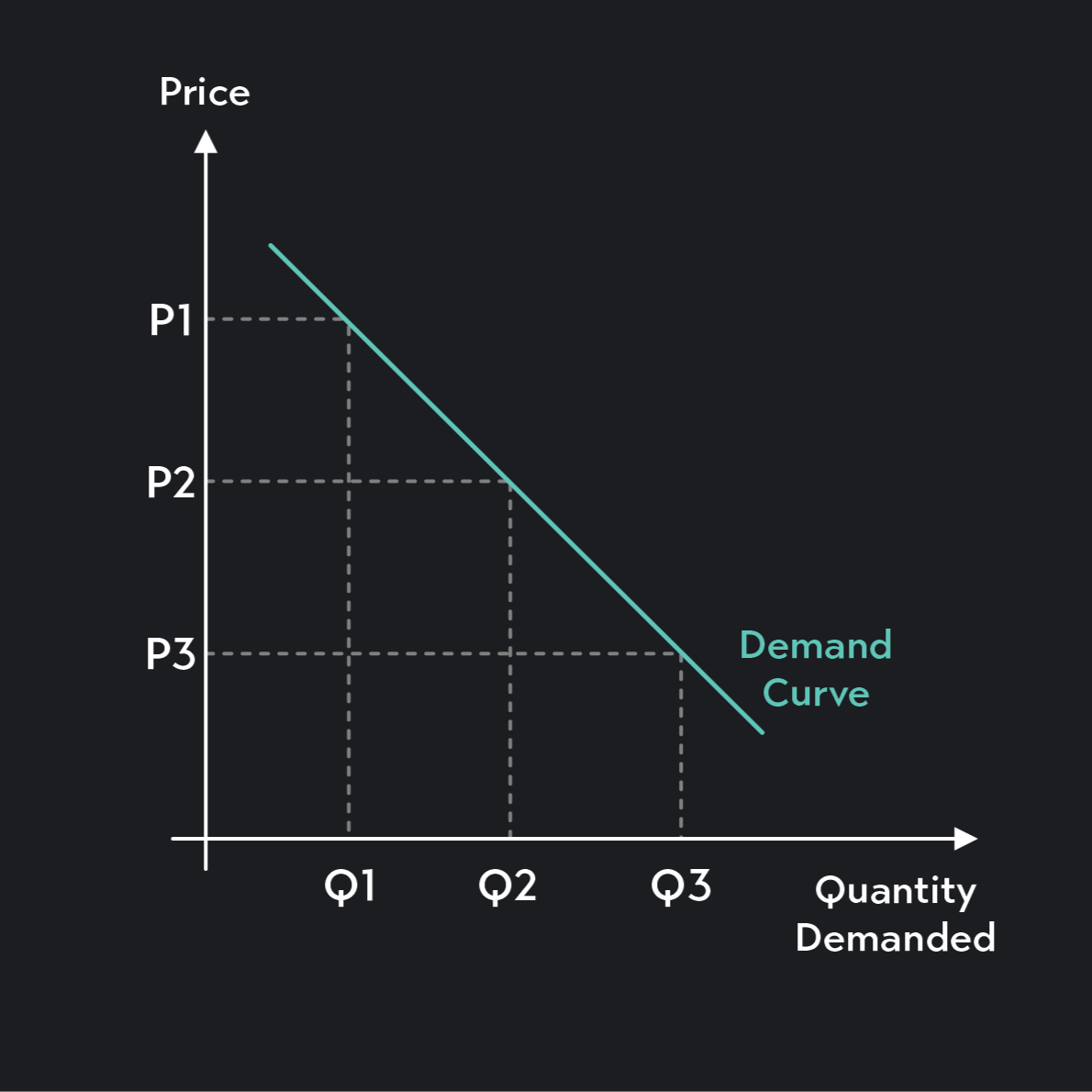1. Demand
Definition:
-
Demand refers to the quantity of a good or service that consumers are willing and able to purchase at various prices over a given period of time.
-
The desire of a commodity backed by ability and willingness to pay is demand.
- Consider your are a consumer of Oreo Biscuits. You like to eat 1 oreo packet every week which cost ₹20. Consider the price of the oreo biscuit packet is reduced from ₹20 to ₹15. The next time you go to buy oreo biscuit, will you buy more packets of the biscuits or less packets of the biscuit?
-
The Law of Demand states that, all else being equal, when the price of a good decreases, the quantity demanded increases, and when the price increases, the quantity demanded decreases.
-
This is because consumers are more willing to buy a good when it is cheaper and less willing to buy it when it is more expensive.
2. Demand Curve
Definition:
- A demand curve is a graphical representation of the relationship between the price of a good and the quantity demanded, typically showing an inverse (negative) relationship.
Shape of the Demand Curve:
- The demand curve generally slopes downward from left to right. This downward slope reflects the law of demand: as the price decreases, consumers buy more of the good.
- The typical demand function is often of the form D = a – bP, where D is the quantity demanded, P is the price, and a and b are constants. The negative relationship between price and demand (as price increases, demand decreases) is captured by the negative sign before bP.

Shifts vs. Movement Along the Demand Curve:
- Movement along the curve: This occurs when the price of the good changes, and the quantity demanded changes as a result. For example, if the price of a good decreases, there will be a movement down along the curve to a higher quantity demanded.
- Shift of the demand curve: A shift happens when there is a change in factors other than price (like income or preferences), causing the entire curve to move to the left (decrease in demand) or to the right (increase in demand).